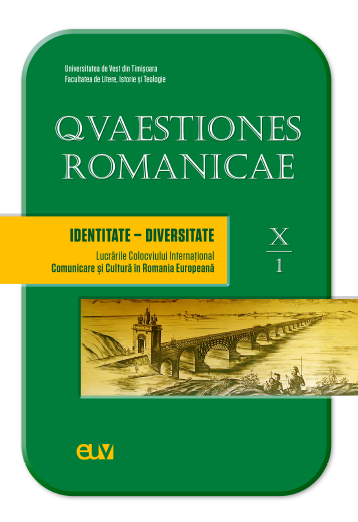Identità attraverso la lingua: La battaglia soda di Luciano Bianciardi
Abstract: (Identity through language: La battaglia soda by Luciano Bianciardi) Gaddiano classicista è stato definito Luciano Bianciardi. Questo giudizio descrive perfettamente l’operazione da lui compiuta ne La battaglia soda: sulla base toscana - attestata, per esempio, dalla voce verbale ‘fo’, dalla ricorrenza del termine ‘figliolo’ - egli innesta, da un lato, espressioni latine, termini letterari, testimonianza della tradizione, dall’altro termini non comuni. Ed anche a livello sintattico e morfologico si notano le stesse commistioni. Al desiderio di concretezza di ascendenza toscana si ascrivono, poi, le ricorrenti espressioni idiomatiche (mentre le varie figure retoriche utilizzate sono di impianto letterario. Tutto ciò è in linea con le idee che animano il testo. Il fondo linguistico toscano rappresenta l’avversione verso la politica di sopraffazione portata avanti dai piemontesi e un tributo alla tradizione letteraria che fa capo a Dante, a cui rimandano alcune espressioni (‘bramose canne’, per esempio). La Toscana e, in particolare, Firenze, con le sue antiche origini romane, testimonia anche la lotta contro ogni forma di corruzione e il bisogno di integrità ed onestà. Se, inoltre, “gli italiani han da farsi da soli, portando ciascuno la sua pietra all’edificio”, si comprende anche l’uso dell’appellativo ‘sor’, tipico della lingua parlata delle regioni centro-settentrionali.
Keywords: Bianciardi, Dante, identity, language, Risorgimento.
Riassunto: Luciano Bianciardi has been defined as a classicist Gaddiano. This judgement perfectly describes the operation he carried out in La battaglia soda: on the Tuscan base - attested, for example, by the verbal voice ‘fo’, by the recurrence of the word ’figliolo’ - he inserts, on the one hand, Latin expressions, literary terms, testimony of tradition, on the other uncommon terms. And also on a syntactic, phonetic and morphological level we can see the same mixes. The recurring idiomatic expressions are then ascribed to the desire for concreteness of Tuscan ancestry, while the various rhetorical figures are literary. All this is in line with the ideas that animate the text. The Tuscan linguistic background represents the aversion towards the politics of oppression carried out by the Piedmontese and a tribute to the literary tradition that belongs to Dante, to which some expressions refer (‘bramose canne’, for example). Tuscany and, in particular, Florence, with its ancient Tuscan origins, also testifies to the fight against all forms of corruption and the need for integrity and honesty. Of, moreover, “gli italiani han da farsi da soli, portando ciascuno la sua pietra all’edificio”, we also understand the use of the appellative sor, typical of the language spoken in the central-northern region.
Parole-chiave: Bianciardi, Dante, identità, lingua, Risorgimento.
